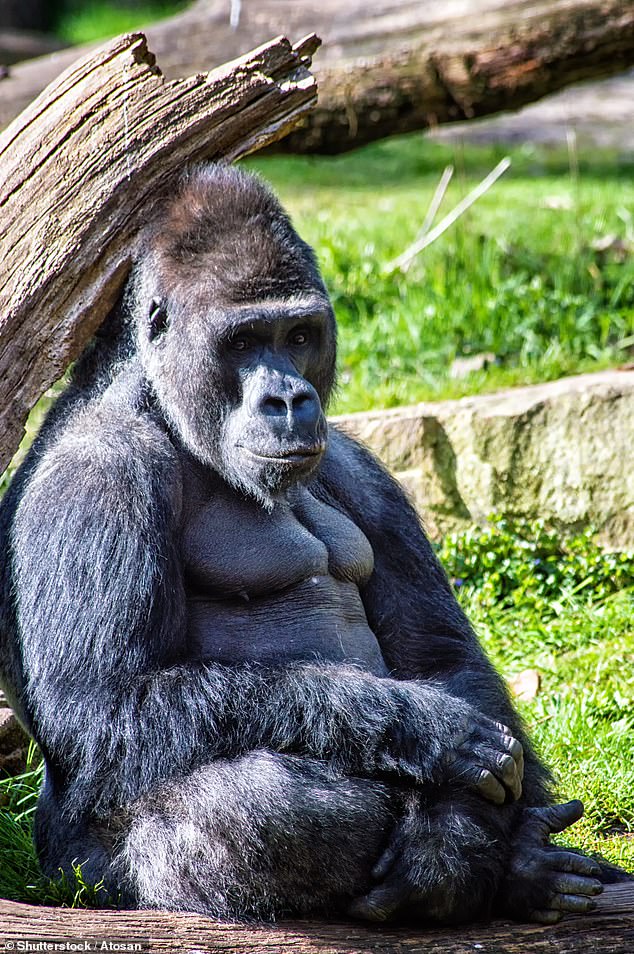Why gorillas have such small penises: Scientists discover the genetic mutation behind apes’ ‘modest’ 3.5cm sex organs – and it could explain why some men are infertile
- Male gorillas have the smallest penises of all apes, averaging 1.1 inches
- Scientists have identified the genetic mutation responsible for this adaptation
With a length of up to 1.80 meters and a weight of a whopping 200 kg, we can say with certainty that gorillas are among the most formidable creatures in the animal kingdom.
But despite their impressive stature, male gorillas are missing in some areas.
The great apes have the smallest penises of all the apes, with the average member measuring just 1.2 inches (3.5 cm) long.
Now scientists at the University at Buffalo have identified the genetic mutation responsible for this adaptation.
And they say the discovery could help explain why some men are infertile.
With a length of up to 1.80 meters and a weight of a whopping 200 kg, we can say with certainty that gorillas are among the most formidable creatures in the animal kingdom. But despite their impressive stature, male gorillas are missing from some area (stock image)
Male gorillas have very small penises and testes and produce a low amount of sperm.
Previous studies have attributed this to their polygynous mating system.
Within a pride, the alpha male is physically larger than the other males, giving him almost exclusive access to the females.
This means that his sperm does not compete with the sperm of other men in the female reproductive tract.
“There are two ways to compete for mates: you can use your body or your sperm,” said Dr. Vincent Lynch, who led the study.
‘Most mammals use a combination of both. Gorillas only use their bodies.’

Male gorillas have very small penises and testes and produce a low amount of sperm. Previous studies have attributed this to their polygynous mating system (stock image)
The researchers suggest that the lack of sperm competition likely led to the evolution of gorillas’ small testicles, as well as their low sperm counts.
And in their new research, they wanted to understand whether the gene mutations behind it could also explain why some men have trouble getting pregnant.
‘We have a series of genes involved in sperm biology that show evidence of deleterious mutations in gorillas,’ said Dr Lynch.
‘We can then look at the same genes in infertile men and see whether there are any mutations in them.
“Here, the gorilla genome essentially acts as a discovery tool for finding candidate genes for human male fertility that we had previously been unable to identify.”
The researchers analyzed more than 13,000 genes from 261 mammals and found that 578 (4.3 percent) showed the same characteristics as the gorilla lineage.
To test the impact of these genes on male fertility, the team used gene editing to remove them from a fruit fly, Drosophila melanogaster.
They found that deleting these genes affected the reproductive function of the male flies.
The team then analyzed the gorilla genes against those of 2,100 infertile men, assessing 109 genes associated with loss of function in men.
“Just a few years ago, there weren’t enough genome sequences and computing power to do these kinds of studies,” Dr. Lynch added.
‘As science collects more genetic data, we will better understand why infertility occurs.’
